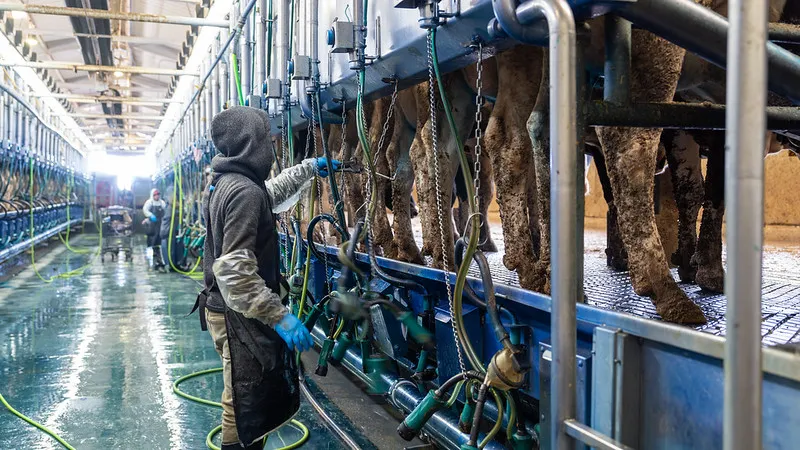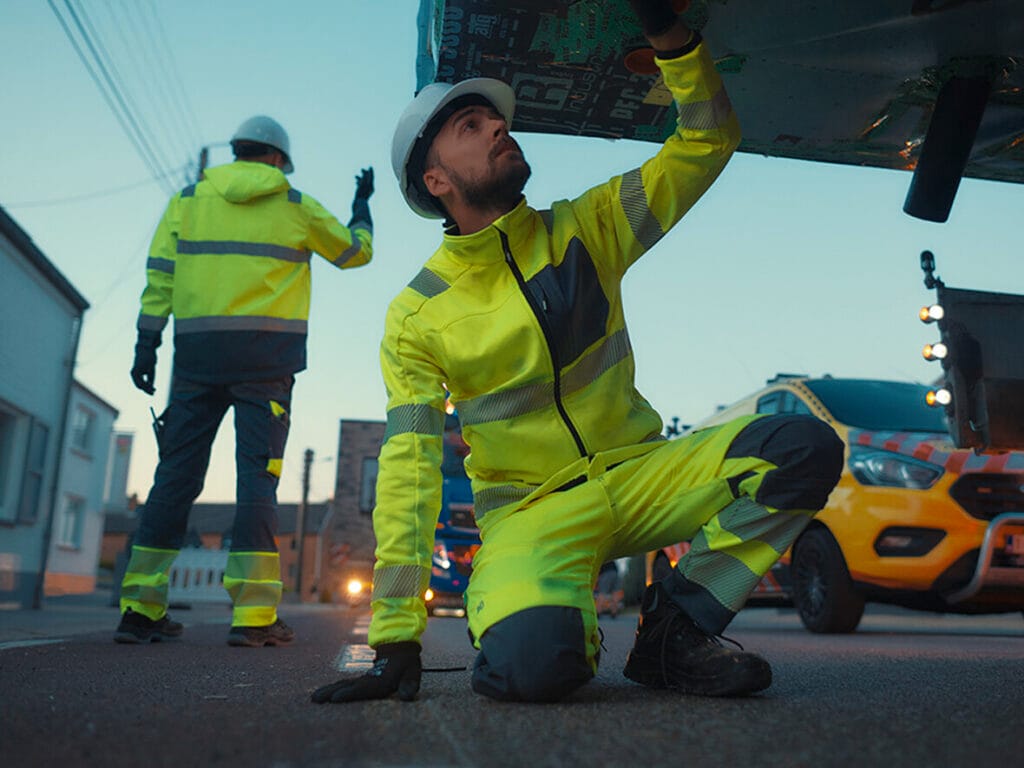
Cuts and lacerations are still one of the top causes of industrial injuries worldwide, and the financial and human costs are staggering. A single deep cut can lead to tendon damage, permanent disability, and lawsuits that cripple a company’s safety record. The solution? Cut-resistant gloves, but here’s the challenge: many buyers misunderstand protection levels and choose gloves that are not suited for the actual hazards. This article explains ANSI and EN cut levels, material technologies, real accident data, and advanced buying strategies.
Cut-resistant gloves reduce injury risk from sharp objects like metal, glass, and blades. ANSI rates gloves from A1 (light protection) to A9 (extreme cut resistance), while EN 388 adds abrasion, puncture, and tear tests. Materials like Kevlar®, HPPE, and steel fibers offer different balances of strength, comfort, and cost.
Why Cut Resistance Matters
- OSHA reports 1 in 4 hand injuries involve cuts.
- Average laceration costs: $12,000–$40,000 per case.
- Lost productivity from one severe injury: 4–8 weeks per worker.
Real-World Incidents Expanded:
Case #1 – Glass Manufacturing, UK:
A worker moving glass sheets wore thin cotton gloves to “keep grip.” A sheet slipped, severing two tendons. Surgery + rehab lasted 12 weeks, costing £28,000 in wages and medical care. Correct PPE: ANSI A6 HPPE gloves with reinforced thumb crotch.Case #2 – Automotive Assembly, Mexico:
Technician used A2-rated gloves for stamping work. A sharp edge cut through in seconds, leading to deep lacerations and a $18,000 claim. Lesson: Task required A5 gloves with sandy nitrile coating for grip on oily surfaces.Case #3 – Food Processing, USA:
Butcher skipped liner gloves for speed during trimming. A slip caused a deep finger cut—OSHA fine: $11,500. Solution: Food-safe ANSI A4 liners under nitrile gloves to maintain hygiene + safety.Case #4 – Construction Site, Canada:
Worker stripping wire wore only leather gloves. Blade sliced through, causing tendon injury. Direct cost: $22,000 + project delays. Correct choice: Kevlar®-lined impact gloves (ANSI A3).Case #5 – Warehouse, Germany:
A packer suffered cuts from broken glass inside a shipment box. Gloves were rated for abrasion, not cut hazards. Audit failure resulted in €9,000 fine and client complaint.
Understanding ANSI & EN Cut Resistance Standards
ANSI/ISEA 105 (North America)
- Measures force (grams) to cut through glove material.
- Levels: A1 = 200g → A9 = 6,000g.
- A1–A2: Light-duty assembly
- A3–A4: Automotive, light metal handling
- A5–A6: Glass, heavy metal
- A7–A9: Steel mills, slitting lines, high-risk fabrication
EN 388 (Europe)
- Ratings format: 4X43F
- First digit: Abrasion
- Second: Cut (Coupe test)
- Third: Tear
- Fourth: Puncture
- Letter: ISO Cut Test (A–F)
Buyer Tip: Always check EN ISO cut letter for modern precision.
Key Materials in Cut-Resistant Gloves
| Material | Advantages | Weaknesses |
|---|---|---|
| Kevlar® | Heat + cut resistant, lightweight | Poor puncture resistance |
| HPPE | Cool, flexible, high cut strength | Sensitive to high heat |
| Glass Fiber Blends | High performance, cost-effective | Can irritate skin if exposed |
| Steel Core Yarns | Maximum protection for heavy tasks | Bulky, reduces dexterity |
| Composite Yarns | Combines comfort + multi-hazard protection | Higher cost |
Common Mistakes Buyers Make
- Underrating risk: Using A2 gloves for sheet metal work.
- Ignoring secondary risks like oil, heat, or impact.
- Choosing low-quality coatings → poor grip leads to accidents.
- Not replacing gloves after cut fibers are visible.
Industry Applications
| Industry | Cut Level Recommended |
|---|---|
| Food Processing | A3–A5 + food-safe coating |
| Automotive Assembly | A3–A5 for stamped metal |
| Glass Handling | A6–A8 + reinforced areas |
| Steel Fabrication | A7–A9 + added heat resistance |
The Real Cost of Wrong Choices
- Direct medical: $12,000–$40,000
- Lost-time injury costs: $50,000+
- OSHA fine: $15,625 per violation
- Lost contracts due to failed client audits
Audit Insight: In 2023, 38% of global PPE failures were due to incorrect cut-level gloves.
Quick Procurement Checklist
- [ ] Assess job hazards: metal edges, glass, knives
- [ ] Select ANSI/EN cut level based on risk
- [ ] Choose coating (PU, nitrile, foam) for grip
- [ ] Verify glove construction for dual hazards (impact, heat)
- [ ] Keep size range for compliance and comfort
- [ ] Request cut-test certificates from suppliers
Buyer FAQ
Q: Do higher cut levels mean less comfort?
A: Modern HPPE blends allow A6–A7 protection with excellent dexterity.Q: Are coated gloves necessary?
A: Yes, for oily or wet environments—better grip = fewer accidents.Q: How often to replace gloves?
A: Daily inspection is critical. Replace if fibers show or coating wears.
Additional Buyer Insights
- Hybrid gloves combine cut resistance with impact or heat protection.
- For winter work, use insulated cut-resistant gloves to prevent cold stress.
- Implement glove color coding for easy hazard level identification on-site.
Conclusion
Cut-resistant gloves are essential—but only when matched to the task hazard. Wrong level = injuries, lawsuits, and reputational damage. Buyers should focus on standards compliance, material science, and secondary hazards for the right solution.
Need ANSI A6+ gloves for glass handling or hybrid gloves for multi-hazard environments?
📩 Email: [email protected]
🌐 Website: www.workwearsolutions.net
Zion Zhang
Recent Posts
 Zero-Budget ESG Compliance: The “Swap & Save” Strategy for Workwear2026年1月10日Executive Summary: Sustainability Without the Surcharge For […]
Zero-Budget ESG Compliance: The “Swap & Save” Strategy for Workwear2026年1月10日Executive Summary: Sustainability Without the Surcharge For […] Selling Eco-Workwear to Budget-Limited Buyers: The “Total Cost” Strategy2026年1月10日Executive Summary: Reframing the “Expensive” […]
Selling Eco-Workwear to Budget-Limited Buyers: The “Total Cost” Strategy2026年1月10日Executive Summary: Reframing the “Expensive” […] 2025 ESG Trends in NA & EU: The Green Mandate for Industrial Workwear2026年1月10日Executive Summary: The End of Voluntary Sustainability For […]
2025 ESG Trends in NA & EU: The Green Mandate for Industrial Workwear2026年1月10日Executive Summary: The End of Voluntary Sustainability For […] Traceability Supports ESG Compliance: The Digital Backbone of Sustainable Manufacturing2026年1月10日Executive Summary: From “Trust Me” to […]
Traceability Supports ESG Compliance: The Digital Backbone of Sustainable Manufacturing2026年1月10日Executive Summary: From “Trust Me” to […] Closed-Loop Recycling Systems: The “Take-Make-Recreate” Revolution in Workwear2026年1月8日Executive Summary: Breaking the Linear Curse For the last […]
Closed-Loop Recycling Systems: The “Take-Make-Recreate” Revolution in Workwear2026年1月8日Executive Summary: Breaking the Linear Curse For the last […] Workwear Rental Reduces Inventory: The “Zero-Bloat” Strategy for Large Enterprises2026年1月8日Executive Summary: From “Ownership” to […]
Workwear Rental Reduces Inventory: The “Zero-Bloat” Strategy for Large Enterprises2026年1月8日Executive Summary: From “Ownership” to […]
CONTACT US
- Feel free to contact us any time. We will get back to you as soon as we can!
- +86-17330061805
